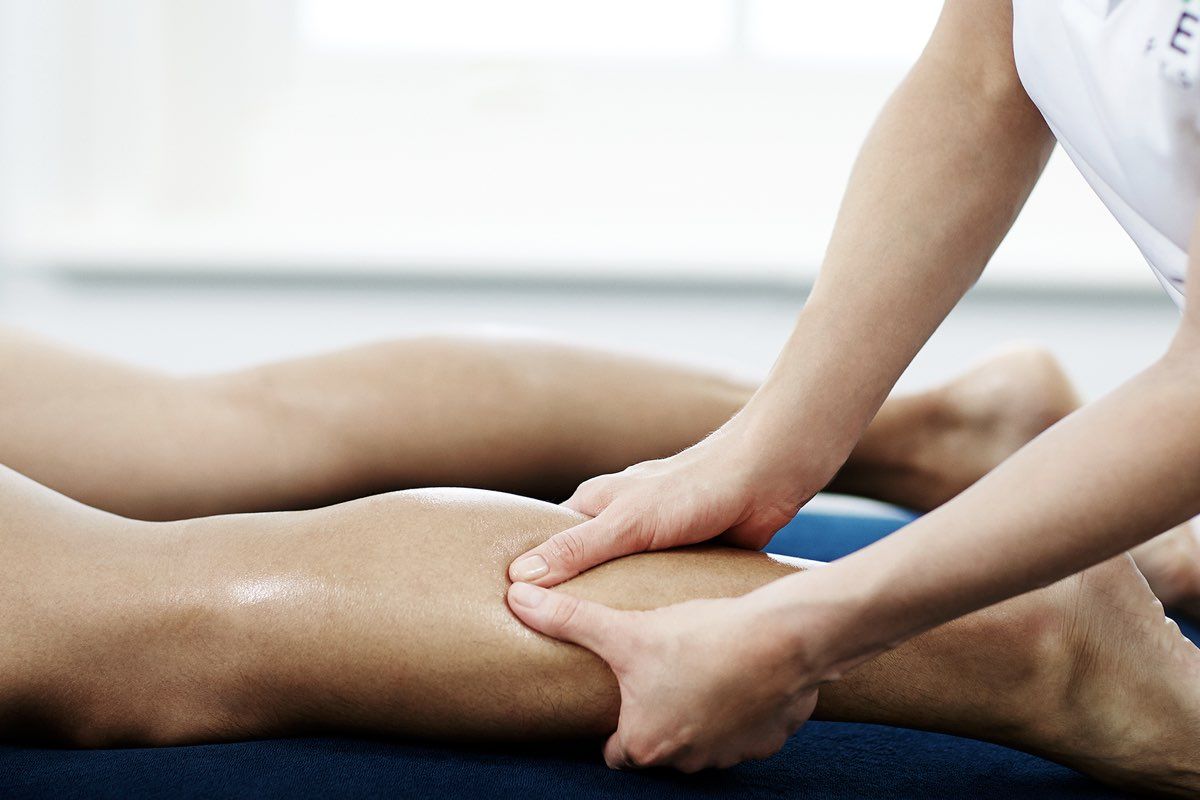Our team of MSK Physiotherapists, Sports Therapists and Personal Trainers can provide a comprehensive assessment and treatment plan. Each plan is specifically designed to meet the needs of the individual and may include:
Physiotherapy and sports therapy play a vital role in the recovery and rehabilitation of muscle, tendon, and ligament injuries. These soft tissue injuries can result from sports, overuse, accidents, or poor biomechanics, leading to pain, swelling, and reduced mobility.
A key focus of physiotherapy is reducing pain and inflammation through manual therapy, soft tissue massage, and modalities such as ultrasound. Once pain is managed, rehabilitation exercises are introduced to restore strength, flexibility, and stability. Strengthening exercises help rebuild muscle tissue, while stretching techniques improve flexibility and prevent stiffness.
For tendon injuries like tendinitis or tendinopathy, eccentric strengthening exercises are particularly effective in promoting tendon healing and resilience. Ligament injuries, such as sprains, require proprioceptive and balance training to restore joint stability and prevent re-injury.
Sports therapy also emphasises movement retraining and sport-specific rehabilitation to ensure a safe return to activity. Taping, bracing, and functional movement assessments can further support recovery and reduce injury recurrence.
Both physiotherapy and sports therapy offer personalised treatment plans to facilitate optimal recovery, helping individuals regain function, improve performance, and prevent future injuries. Early intervention and structured rehabilitation are essential for achieving the best outcomes.
Physiotherapy plays a vital role in the recovery and rehabilitation of muscle, tendon, and ligament injuries. It aids in reducing pain, promoting healing, and restoring normal function. Here's how physiotherapy can help:
Start your journey with PhysioFunction! Contact us to book in a consultation or please call 0800 043 0327.
Muscles come in three forms: skeletal, cardiac and smooth. The cardiac muscle is found in the heart and is an involuntary muscle (it works without us thinking about it). Smooth muscle is found in our internal organs (such as the bladder) and aids healthy bodily functions. These are also involuntary muscles. Skeletal muscles are found all over the body and contain a multitude of tiny fibres which slide together to contract and shorten the muscle to generate movement. This movement is possible due to the presence of tendons (tough bands of connective tissue) which attach the muscles to bones. Ligaments are different in that they appear as woven bands that attach from bone to bone at either side of a joint, providing stability.
As skeletal muscles’ primary role is to generate movement, injuries most often occur because of physical activity or exercise. An injury occurs when filaments within the muscle fibres are separated, causing pain and inflammation, usually following an over-stretch, direct impact or wound to the muscle. When this occurs, it is called a strain. Such injuries are categorised according to their severity:
Grade 1 – Mild muscle strain when less that 5% of the muscle is damaged.
Grade 2 – More severe muscle strain with greater than 5% of the muscle damaged.
Grade 3 – Severe muscle strain with significant or even complete tear of the muscle fibres.
Grade 1 and grade 2 muscle strains may recover with rest, compression and elevation, but where pain and weakness persist physical therapy may assist in completing the recovery.
Grade 3 muscle strains are a more significant injury and will often require a visit to hospital, in some cases requiring immobilisation or surgery. Physical therapy is then essential to ensure full recovery.
Injuries to muscles can be prevented by maintaining a healthy lifestyle and bodyweight, completing a thorough warm up and cool down before and after exercise, and performing regular stretching and strengthening exercises to maintain the range and strength of the muscles.
